“It has never been my object to record my dreams, just the determination to realize them.”
“The tricks of today are the truths of tomorrow.”
“There is no progress in art, any more than there is progress in making love. There are simply different ways of doing it.”
“The streets are full of admirable craftsmen, but so few practical dreamers.”
“l paint what cannot be photographed, and l photograph what l do not wish to paint.”
“I have been accused of being a joker. But the most successful art to me involves humor.”
“I do not photograph nature. I photograph my visions.”
“I paint what cannot be photographed, that which comes from the imagination or from dreams, or from an unconscious drive.”
“A creator needs only one enthusiast to justify him.”
“All critics should be assassinated.”
“An original is a creation motivated by desire.
Any reproduction of an original is motivated by necessity.
To create is divine, to reproduce is human.”
“Of course, there will always be those who look only at technique, who ask ‘how’, while others of a more curious nature will ask ‘why’. Personally, I have always preferred inspiration to information.”
Brother-in-law Joseph Browner on his first impression of the artist; quoted in The Fresno Bee, August 26, 1990.
Artist and photographer, Naomi Savage, Man Ray’s niece and protégée, in a 2000 newspaper interview.
/https://public-media.smithsonianmag.com/filer/Man-Ray-artist-631.jpg)


- Rayograph: Untitled
1923–28
Medium:
Gelatin silver print

[Rayograph: Comb, Straight Razor Blade, Needle and Other Forms]
1922
Medium:
Gelatin silver print
Man Ray – Tears (Les Larmes)
Image via harryneelam.com
http://www.widewalls.ch/artist/man-ray/

Portrait of Frida Kahlo by Man Ray

Lee Miller by Man Ray
photo by Man Ray

Photographer: Eileen Agar | Tate

Photo: Henri Cartier-Bresson, 1968

James Joyce
Photo by Man Ray



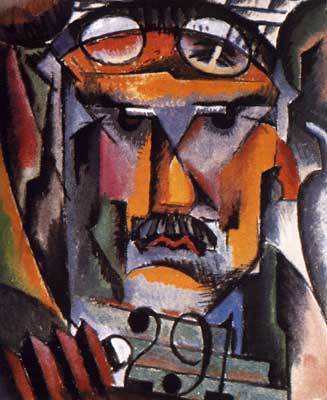
Portrait of Alfred Stieglitz

Man Ray described Fair Weather as the high point of his Surrealist production. Its vignettes derive from nightmares of barren trees growing in the artist’s yard, of mythical beasts fighting on his roof, and of an affair between his maid and carpenter. Other elements—such as the pool table and the mathematics book—refer to his earlier works. The mannequin in harlequin costume may be a kind of self-portrait.
courtesy of the Philadelphia Museum of Art
Completed just before the outbreak of World War II, Fair Weather is also an anxious and ironic premonition of the impending international conflict. The bombarded stone wall and the puddle of blood are immediately legible as consequences of violence. When Man Ray departed Europe in 1940 to return to the United States, he left this painting behind. The next year he made a smaller version, fearing that the original might be destroyed.
information courtesy of the Philadelphia Museum of Art
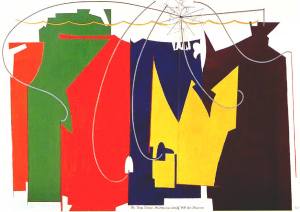 The Rope Dancer accompanies herself with her shadows, 1916
The Rope Dancer accompanies herself with her shadows, 1916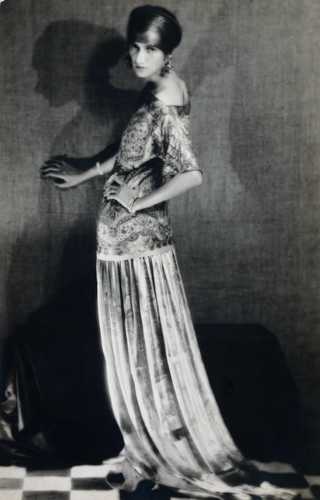
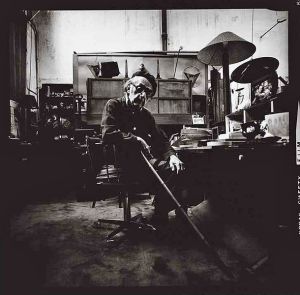 Photo of Man Ray by Lothar Wolleh
Photo of Man Ray by Lothar WollehMontparnasseCemetery
Let me show you what I can do with it.
R. E. M., in “Feeling Gravity’s Pull” on Fables of the Reconstruction (1985)
(Wikiquote)

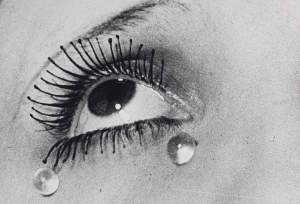

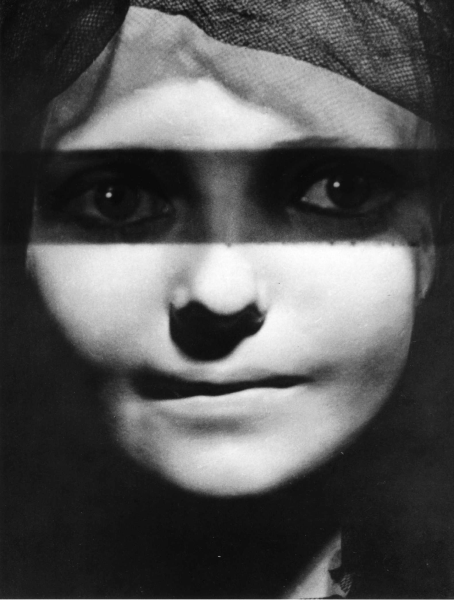

 Dancer Simone Prieuer, 1930
Dancer Simone Prieuer, 1930
 Noire et Blanches, 1926
Noire et Blanches, 1926 “The Mona Lisa”, 1919
“The Mona Lisa”, 1919